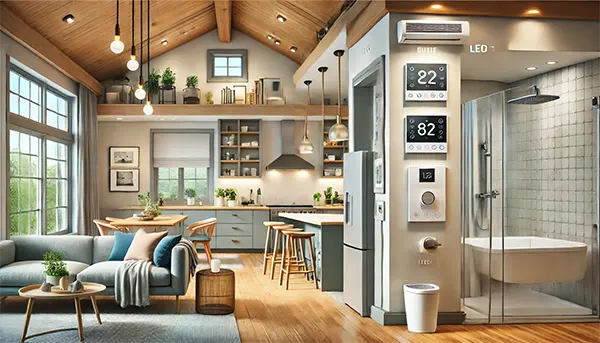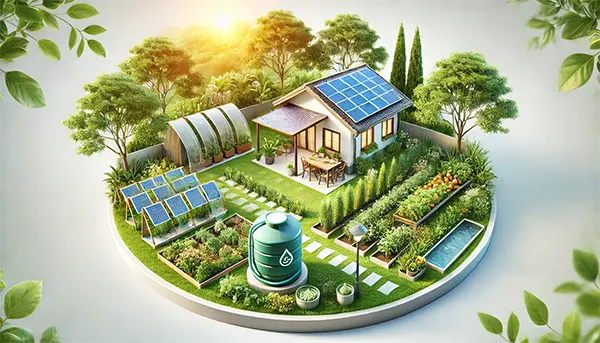
How to Save on Utility Bills: Simple and Effective Ways
Managing household expenses can be a challenging task, and utility bills often account for a significant portion of monthly costs. However, there are several effective strategies that can help reduce these expenses without compromising comfort. In this article, we explore simple yet effective ways to save on electricity, water, heating, and other utility services.
Energy-Efficient Appliances and Lighting
One of the most significant contributors to high utility bills is inefficient energy usage. Replacing old appliances with energy-efficient models can make a substantial difference in your monthly costs. Modern appliances, such as refrigerators, washing machines, and air conditioning units, often come with energy ratings that indicate their efficiency. Opting for appliances with higher ratings ensures that they consume less energy while maintaining performance. The upfront cost of purchasing energy-efficient appliances can be higher, but the savings on electricity bills over time make it a worthwhile investment.
In addition to upgrading appliances, consider switching to energy-saving lighting. LED bulbs are one of the most efficient lighting options available. They consume up to 75% less energy than traditional incandescent bulbs and last much longer. This reduction in energy consumption not only lowers your electricity bills but also contributes to environmental sustainability by using fewer resources. Furthermore, replacing incandescent bulbs with LED alternatives helps reduce the carbon footprint, making your home more eco-friendly.
Switching to LED Bulbs
Another easy way to cut down on energy usage is by replacing incandescent or fluorescent light bulbs with LED lights. LED bulbs are known for their long lifespan and energy efficiency. They consume up to 75% less energy than traditional bulbs, which can lead to noticeable savings on your electricity bill over time. Additionally, LED lights emit less heat, reducing the load on your air conditioning system during warmer months. This is particularly beneficial in areas with hot summers, as it helps lower cooling costs while maintaining effective lighting in your home.
Optimizing Heating and Cooling Systems
Heating and cooling systems are often the largest contributors to household energy consumption. By ensuring that your heating and air conditioning units are running efficiently, you can reduce the costs associated with these services. Regular maintenance is essential to keep these systems in top condition. Dirty filters, clogged ducts, and outdated systems can increase energy consumption and reduce the efficiency of your heating and cooling units. Servicing these systems regularly ensures that they operate at their best, saving you money in the long run.
Moreover, consider installing a smart thermostat to manage your heating and cooling systems. These devices can be programmed to adjust temperatures according to your daily schedule, ensuring that you’re not wasting energy when no one is home. Smart thermostats learn your preferences over time, and many can be controlled remotely via smartphone apps, providing you with greater control over your home’s temperature. This way, you can ensure your home remains comfortable while minimizing energy consumption.
Smart Thermostats and Insulation
Installing a smart thermostat can help you better control your heating and cooling needs. These devices can be programmed to adjust temperatures based on your schedule, ensuring that your home is only heated or cooled when necessary. Additionally, proper insulation plays a critical role in maintaining a comfortable indoor environment. Insulating your home, particularly around windows and doors, can help prevent heat loss in winter and keep your house cool in the summer, ultimately reducing the need for constant temperature adjustments. By sealing any gaps or leaks, you can further enhance the energy efficiency of your home and save on heating and cooling costs.
Water Conservation Techniques
Water bills can also add up quickly, especially if there are leaks or inefficient usage. Implementing water-saving strategies can help reduce these costs and contribute to environmental sustainability. One of the easiest steps is to check for leaks in your pipes, faucets, and toilets. Even a small leak can waste a significant amount of water over time, so prompt repairs are essential. Not only will fixing leaks save you money, but it will also help conserve valuable water resources, making it a win-win for both your budget and the environment.
In addition to fixing leaks, consider installing water-efficient appliances and fixtures in your home. Low-flow toilets, faucets, and showerheads can significantly reduce water usage without compromising performance. These fixtures are designed to use less water while still providing the necessary pressure and flow for a satisfying experience. By making these simple changes, you can save water and reduce your water bills over time.
Low-Flow Fixtures and Timers
Another simple change is replacing old faucets, showerheads, and toilets with low-flow alternatives. These fixtures use significantly less water without sacrificing performance, making them a cost-effective investment for homeowners. Additionally, installing timers on sprinklers or using water-efficient irrigation systems for gardens can further reduce water consumption. These measures are particularly effective in areas where water usage is high or subject to seasonal fluctuations, helping to lower utility costs over the long term. By being mindful of your water usage, you can reduce waste and keep your water bills under control.

Proper Use of Household Appliances
While energy-efficient appliances can certainly help reduce utility bills, how and when you use them also makes a big difference. For example, running a washing machine or dishwasher with a full load rather than a half load reduces the amount of energy and water used per wash. Similarly, using appliances during off-peak hours, when electricity rates are lower, can lead to savings. Many utility providers offer cheaper rates during nighttime hours, so taking advantage of these time slots can help lower your overall electricity usage. Be sure to check with your provider to find out when off-peak hours are, as this can vary depending on your location.
In addition to using appliances efficiently, it’s also important to unplug electronics and appliances when they are not in use. Many devices, even when turned off, continue to consume electricity in standby mode. This phenomenon, known as “phantom load,” can account for a significant portion of your electricity bill. Unplugging chargers, televisions, and kitchen appliances when they are not being used is a simple yet effective way to cut down on unnecessary energy consumption. A power strip with an on/off switch can help make this process even easier by allowing you to disconnect multiple devices at once.
Unplugging Idle Electronics
Another effective strategy is unplugging electronics and appliances when they are not in use. Many devices, even when turned off, continue to consume electricity in standby mode. This phenomenon, known as “phantom load,” can account for a significant portion of your electricity bill. Unplugging chargers, televisions, and kitchen appliances when they are not being used is a simple yet effective way to cut down on unnecessary energy consumption. Consider using smart plugs or power strips with individual switches to make this task more convenient.
By implementing these practical strategies, you can significantly reduce your utility bills and make your household more energy-efficient. Whether it’s through upgrading appliances, adjusting your heating and cooling systems, conserving water, or simply adjusting your usage habits, these changes can result in both short-term savings and long-term financial benefits. Start small by making a few changes, and over time, you will notice a considerable reduction in your utility bills.
